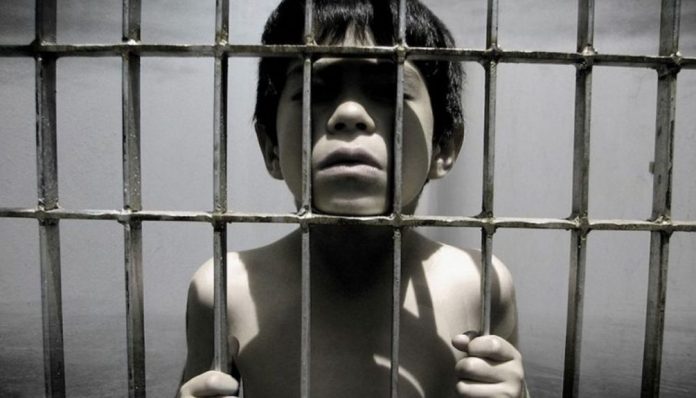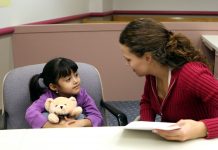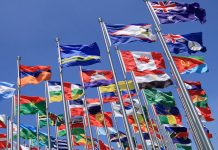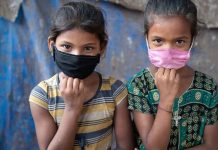This article is written by Sahaja from NALSAR University of Law, Hyderabad. This article analyzes the provisions on child asylum seekers and how they are to be dealt with, and the need to provide such children with protection.
Table of Contents
Introduction
Every child is entitled to a bright future. The future of the children and their families, living in conflict or suffering as a result of poverty, persecution, or a lack of opportunity, is not secure. It is why millions of people leave their homes each year in quest of a safer, better tomorrow. This article analyzes the provisions on child asylum seekers, how they are to be dealt with, and the need to provide such children with protection.
Child asylum seekers
Refugees are persons who have been forced to flee violence, persecution, or war and are looking for a safe haven. Nearly 25.9 million refugees live in the world, with more than half of them being children. Refugees flee from their homes and try to find a new place to live a safe and healthy life free from violence.
Refugee children are the most exposed to threats and vulnerable to the outside world. They are at the risk of being exploited for various reasons. Child refugees require immediate protection from various forms of violence, such as abuse, exploitation, and neglect. Child marriage is also becoming more prevalent among refugee children. Many NGOs (Non-Governmental Organisations) like Save the Children, Amnesty International and several other bodies work towards this concern and try to provide refugees with basic amenities and services that every human deserves and has the right to receive.
An asylum seeker is similar to a refugee fleeing from their homeland in search of better living conditions. The term ‘asylum seeker’ refers to someone whose application for asylum is yet to be processed. The difference between a refugee and an asylum seeker, although the terms are used interchangeably, is that a refugee is recognised and determined by law but an asylum seeker is someone who has applied for protection in the country to which he or she has fled.
Children on the move, that is, migrants, refugees and asylum seekers are most vulnerable and require attention and education. The risks for children do not stop once they arrive at the destination country. They face the risk of child marriages, child trafficking and sexual exploitation.
For millions of children around the world, seeking asylum is a reality. However, only a small percentage of them make it to the wealthier countries.
Why should we focus on child asylum seekers
When it comes to children, the situation of ‘global displacement’ in the twenty-first century is particularly concerning. Childhood is a crucial time of rapid development and growth. The numerous stressors that refugee and asylum-seeking children face can have a harmful impact on these processes.
Child asylum seekers need to be given utmost importance and must be protected and provided with basic needs and amenities. A child asylum seeker, once accepted into an asylum, must grow up safely and must be given the chance to fulfil their dreams and obligations. In such cases, protection is not a single act performed at a certain time, but a sequence of interconnected activities carried out over a long period of time, allowing the child’s trajectory to be planned to reach stability throughout adulthood and later life. This underpins the idea that protection is more than just a guarantee of no imminent danger. It is also about the presence of chance over time.
Currently, millions of people around the world are displaced and seeking sanctuary for a variety of causes, including natural catastrophes, economic destruction, human rights violations, and fear of persecution. In 2018, an estimated 13.6 million people were displaced for the first time. Internally displaced individuals accounted for 10.8 million people, with refugees and asylum seekers accounting for 2.8 million. Children’s safety while they are displaced and on the move is compromised because there are only a few legal, safe migration options available. This puts pressure on children and their families to use illegal and risky migratory methods, such as paying migrant children smugglers to get through restrictions and heavily guarded border crossings.
The United Nations Convention on the Rights of the Child (CRC) declarations of rights for refugee and asylum-seeking children are frequently violated, having serious consequences for children’s health and development, which is already vulnerable and impaired. A child’s education, health and the opportunities presented to the child are one of the most significant aspects that would help the child grow. For a child seeking asylum, the aforementioned needs and amenities are the topmost priority and the same must be meted out to the child.
Education
When it comes to human capital, the displacement of children and the resulting loss of schooling has the greatest impact. Several international treaties, agreements, and universal goals emphasise the right to education and its value (e.g., the United Nations Sustainable Development Goals and the CRC). Even though basic education is crucial for development, many children in refugee camps and the cities of the countries to which they have fled are denied this right.
In the realm of education, gender disparity also plays a huge role. To get an education, girls must overcome enormous obstacles. Girls are frequently expected to help with household tasks like collecting water and preparing meals, as well as looking after younger siblings and relatives. Even in the nation of resettlement, daughters may be forced to marry early in return for goods or to limit the number of children in need of care.
Health
Apart from the rights that the children are entitled to, health is one of the most basic requirements for a child. Living conditions, malnutrition, a lack of safe water sources, and limited access to medical care all have an impact on the physical health of asylum-seeking children. Infectious disorders such as tuberculosis, hepatitis B, HIV, and malaria, for example, are becoming more common.
Apart from physical health, the mental health of the children is also badly affected. Trauma is something that all refugee and asylum-seeking children go through. When departing their home country, many people witness the death of a family member or friend, as well as acts of violence against themselves and others, and have traumatic experiences.
The existing provisions on child asylum seekers
With 196 States Parties, the United Nations Convention on the Rights of the Child (CRC) is the most ratified human rights convention in history. The CRC is a 54-Article framework that outlines government responsibilities for ensuring the protection, promotion, and fulfilment of all children’s rights within their territories.
Article 22 of the CRC requires all the state parties (SP) to take reasonable steps to ensure that a child seeking refugee status receives appropriate protection and humanitarian assistance. A child must be capable of exercising the rights outlined in the present Convention and other international human rights or humanitarian instruments to which the said States are parties.
The main attributes of Article 22 that need to be followed are:
- Children who are refugees are entitled to adequate protection and international support.
- All of their rights under the Convention on the Rights of the Child, as well as other international human rights treaties and humanitarian law, must be respected.
- To safeguard and aid such children, the parties must work with the UN and other associated agencies.
- Governments have a priority commitment to reunite families in the best interests of children, with a special focus on unaccompanied and separated children.
The concept of non-discrimination (Article 2), as well as its transgressions, may be a driving force for children and their parents fleeing their homes in search of safety. The article also stresses that children cannot be discriminated against based on sex. This is conclusive of the fact that every child must be treated equally.
Discrimination can be based on several factors, including ethnicity, religious membership, and sexual orientation. Furthermore, the very classification of these youngsters as refugees and asylum-seekers constitutes a potential disadvantage, necessitating Article 2 protection.
As a general rule, all CRC rights apply to all children in all situations, regardless of their background, as stated in Article 2. This general norm also applies to Article 22, which states that refugee and asylum-seeking children have the same rights as any other kid.
Article 22 avoids reiterating all child rights one by one, instead of ensuring that refugee and asylum-seeking children maintain their CRC rights while also upholding the requirements and protection of other international human rights or humanitarian instruments binding on the relevant SP.
In terms of the four characteristics described, governments are straining to ameliorate the effects of displacement and failing to follow through on their international obligations under Article 22. Tracking young children in rich countries remains a difficulty, not due to a lack of resources, but due to insufficient data gathering mechanisms that make monitoring difficult.
Asylum-seeking children are not to be given special status or treated any differently from children in the host country, according to this attribute. All of a child’s CRC rights, including non-discriminatory access to early childhood education, formal and non-formal learning environments, and vocational and technical training, shall be released.
Scope of recommendations
There’s still a lot to learn about securing migratory pathways and mitigating hazards as youngsters transit borders. The risky trips to safety increase many of the negative effects on health and development, including trauma, being separated from loved ones, and exploitation. There is a global demand for improved child-friendly accommodations and services at the landing point, particularly for youngsters waiting for claims to be processed. Many children are placed with their parents in adult institutions during this period of uncertainty and dread and are barred from claiming other CRC rights such as education, health, and play.
Better accountability, monitoring, and reporting procedures are needed at the national level to guarantee that SPs are adhering to their CRC and other international commitments. Some of the changes that can be implemented to ensure the protection of each child are:
- To guarantee that SPs are held responsible for upholding both their national and international commitments under the CRC, timely and accurate data on the provision of rights for refugee and asylum-seeking children is required.
- The SPs must implement structural commitments in the shape of legislation and policies in support of the refugee and asylum-seeking children they host, as per their obligations under the CRC in general (and Article 22 in particular).
- The SPs must make every effort to ensure that processes are consistent with the broad principles of non-discriminatory promotion of these children’s rights to life and full development (Article 6) (Article-2).
- While providing enough opportunity for children to engage, voice their thoughts, and be heard during these decision-making processes, the SPs must keep the children’s best interests (Article 3) at the forefront of their decisions (Article 12).
- The SPs should collect and publish disaggregated statistics on all refugee and asylum-seeking children’s rights on a regular basis.
- To combat adversities such as xenophobia and discrimination displayed by citizens, which add to the difficulties faced by these children, widespread public awareness-raising is essential.
Conclusion
Children are often described as the future of the world or a country. It is the moral obligation of the receiving country to make them feel safe and protected. As stated in the previous section, children seeking asylum must be prioritised and must be provided with safety and protection as soon as possible.
The United Nations Convention on the Rights of the Child (UNCRC) is a legally enforceable international treaty that outlines every child’s civil, political, economic, social, and cultural rights, regardless of colour, religion, or ability. Every SP must abide by the rules set out in the CRC to make sure children get to exercise the rights they are entitled to and receive basic needs. Working with the provisions of Article 22 while adhering to the ideals of the CRC can help lead us through this massive and crucial undertaking.
All governments, and indeed all human cultures, must work together to alleviate the burden and suffering of refugee and asylum-seeking children who travel enormous distances, endure harrowing journeys, and all too frequently meet disheartening outcomes before, during, and even after their resettlement. Governments must put forward their best endeavours to rescue, save and protect children who are seeking normal childhoods in a safe society.
References
LawSikho has created a telegram group for exchanging legal knowledge, referrals and various opportunities. You can click on this link and join:
 Serato DJ Crack 2025Serato DJ PRO Crack
Serato DJ Crack 2025Serato DJ PRO Crack











 Allow notifications
Allow notifications



